Allison's story:
How taking parental leave as an entrepreneur and sales leader can result in business growth
Co-Founder of Parentaly, Allison Whalen, has always had an entrepreneurial spirit. At Managed by Q, she built and scaled an enterprise business unit that would later represent more than 70% of the company's revenue by the time the company was acquired by WeWork.
But when she took her first parental leave in the early stages of developing this business unit, she was shocked when she came back to the office. It felt like the momentum she’d built had all vanished when she turned on her out-of-office responder.
Her team struggled to hit aggressive goals. They weren't supported in her absence. And many critical business decisions were made without her input that she now had to simply accept - even though they negatively impacted her team. It felt like the weight of disorganization fell on her as a brand new mom.
That’s when the epiphany hit: better upfront planning and communication could have allowed her and her team to avoid a lot of these issues.
Allison knew she had to do something so other parents—and their companies—wouldn’t have to face these same bumps. But this paradigm shift required a new solution.
“While there are tons of vendors helping women have babies, they are all focused on medical, emotional, or childrearing; no one is focused on the major professional difficulties associated with taking a 3+ month parental leave.”
Most companies don’t know how to guide employees on creating coverage and return plans effectively. Parentaly combines a new parent “toolkit” with coaching to ensure employees can take leave while also supporting their teams with minimal disruption.
Allison launched the business in 2019 with co-founder Jaime Rooney after a very long pilot period and right away signed multiple clients. Then a month later, Allison found out she was expecting baby #2.
Business slowed down during the onset of the pandemic, which was also Allison’s third trimester.
“While I was incredibly anxious, all of my work with Parentaly had shown me so many examples of how having a child could make things so much better at work. So I forged ahead, trusting that things would work out. I would reemerge better than before.”
Allison had her daughter, Colette, in July 2020. After an unheard-of (for an entrepreneur) five months off, Allison had a new perspective on the business.
Read more to learn how parental leave helped Allison increase growth at Parentaly, and how sales leaders and companies can also capitalize on providing generous paid leave. Dive deeper below.


#1 Why startups should view their pregnant (and working parent) employees as one of their greatest competitive assets
When Allison found out she was pregnant while leading the enterprise team at a venture-backed startup, she was extremely worried about how this would impact her work. The company was at a critical inflection point, they were building out more layers at the senior level, and her team was working on high priority pilots that wouldn’t finish before Allison’s due date. She was worried that leaving for three months would put her so far out of the loop that she wouldn’t be able to return and continue to move into new leadership roles.
But in hindsight, she realized it was actually because of her parental leave that she was able to return and do better than ever. Now, after having worked with hundreds of employees returning to work after parental leave, she realizes that her story is not unique.
Here‘s why startups in particular reap huge benefits when employees take parental leave:
- Creation of real, immovable deadlines: Nothing incentivizes people to move faster and smarter than an upcoming leave of absence. There’s a greater sense of urgency and prioritization when you know someone is going to be out in a few months.
- Acceleration of key milestones: Startups live and die by hitting key milestones quickly so that they can raise the next funding round. Expecting employees often will accelerate milestones because they don’t want to transition projects.
- Up-leveling of work: The expecting employee typically trains in junior colleagues to take on stretch opportunities — and if those employees do well, they can hold onto that work, freeing up the new parent employee to take on bigger, more strategic projects.
- Forcing function to implement more structure, process and documentation: Startups are notoriously messy, unstructured and scrappy. But when an employee goes on leave, they have to create additional documentation, process and training to help their coverage team. This is often hugely beneficial to a wider audience, as it codifies important work streams.
- Identification of wasted time and unnecessary work: It’s rare to have the opportunity to take a step back and question “Does this really need to happen?” By going through coverage planning, employees look at every single meeting, project and responsibility with a critical eye — usually identifying wasted efforts that they can sunset completely.
- Establish strong company culture around working parenthood: A parental leave is a concrete and visible representation of working parenthood, and employees will be watching closely to see how a company supports the pregnant employee. This is one of the simplest and fastest ways for a company to demonstrate their support of working parenthood.
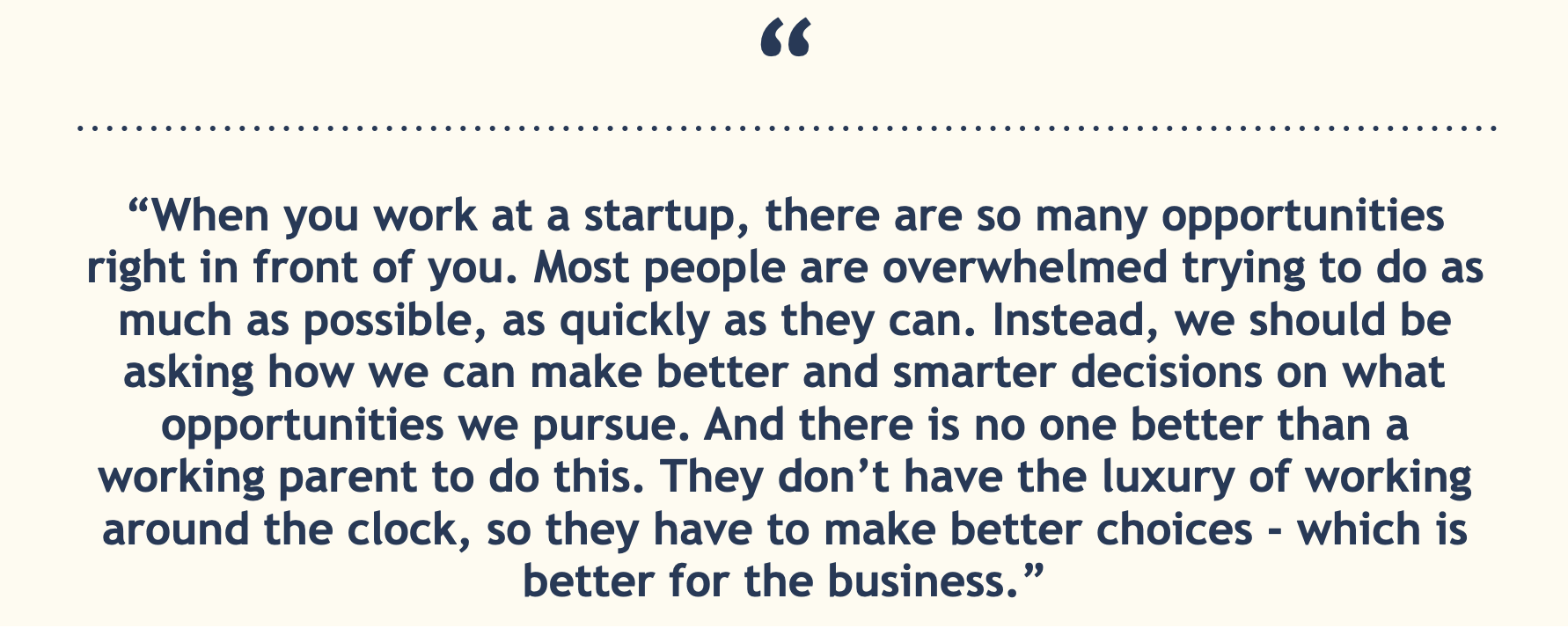
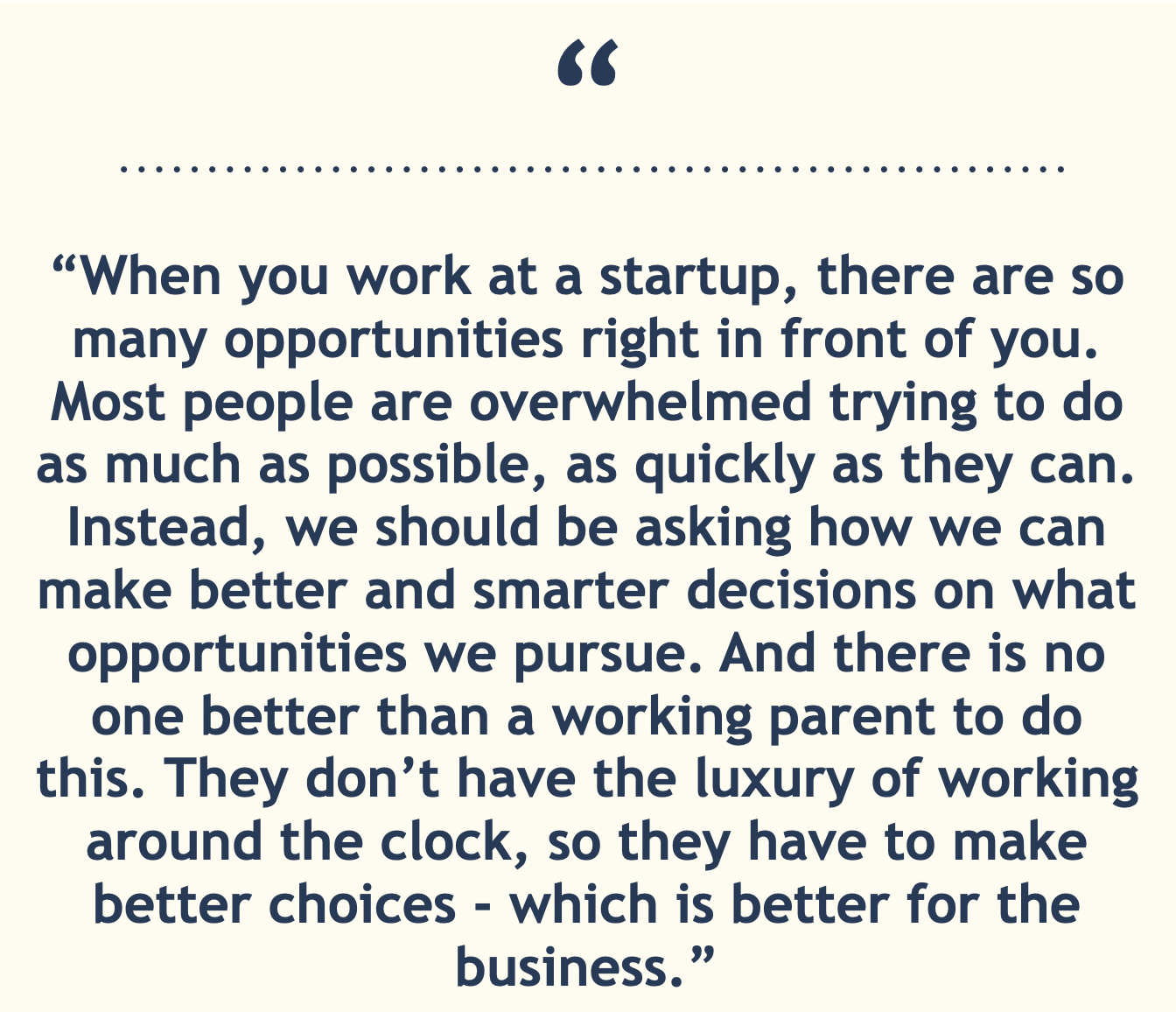
#2 Setting a sales team up for success when an AE and/or manager goes on leave
When Allison was pregnant with her first child she was leading enterprise sales at a technology startup, and one of her direct reports was also pregnant and due three months before her. The team was small, but the goals and importance to the company were significant. She had to figure out how to “cover for” an AE on her team, and then she went out on leave shortly thereafter. “I really didn’t know how to think about coverage planning and goal achievement in the context of multiple parental leaves. I learned a lot of lessons the hard way.”
Here are the main recommendations Allison provides to other sales managers as they think about setting their team up for success when an AE goes on leave:
- Make sure your commission plan is fair and incentivizes the right behavior: Companies need to have a specific policy for how commission works when an employee takes parental leave. Allison wrote extensively about this here.
- The ramp period when a parent AE returns to work is so important to get right: Most companies do not give a ramp goal to a returning employee, which can be demoralizing and result in attrition. Think about creative ways to get the returning employee ramped faster: can they get additional SDR support? More inbounds? Better territories for a short period of time? MQLs? What can you do to help them build their pipeline as fast as possible?
- Think critically about whether or not you should “cover for” your direct report who is on leave: Every time a manager moves into a player/coach role, it takes away from the rest of the team. There may be specific deals that the manager should own, but for the most part companies should try to keep managers out of the weeds of the deals.
- Make sure the whole team knows who gets the pipeline when the employee returns to work: This can be the most contentious part of coverage planning — if an employee hands off a pipeline, do they get unclosed deals back when they return? Everyone should know the answer to this upfront, and commission plans should anticipate this.
And if you’re a sales manager going on parental leave:
- Don’t forget to plan for coaching: Often, the coverage plan for a sales manager involves someone overseeing the team, reviewing pipeline, and having team meetings. But it’s important that you also provide coaching feedback to your AEs. If you can’t find a coverage manager to do this, consider setting up a more formalized peer coaching program so AEs can coach each other while you are out.
- If you have an AE step up into a player/coach role, reduce their goal: If you have an AE who is close to getting promoted into management, this could be a great opportunity for them to dip their toes into management. But then you need to reduce their quota appropriately.
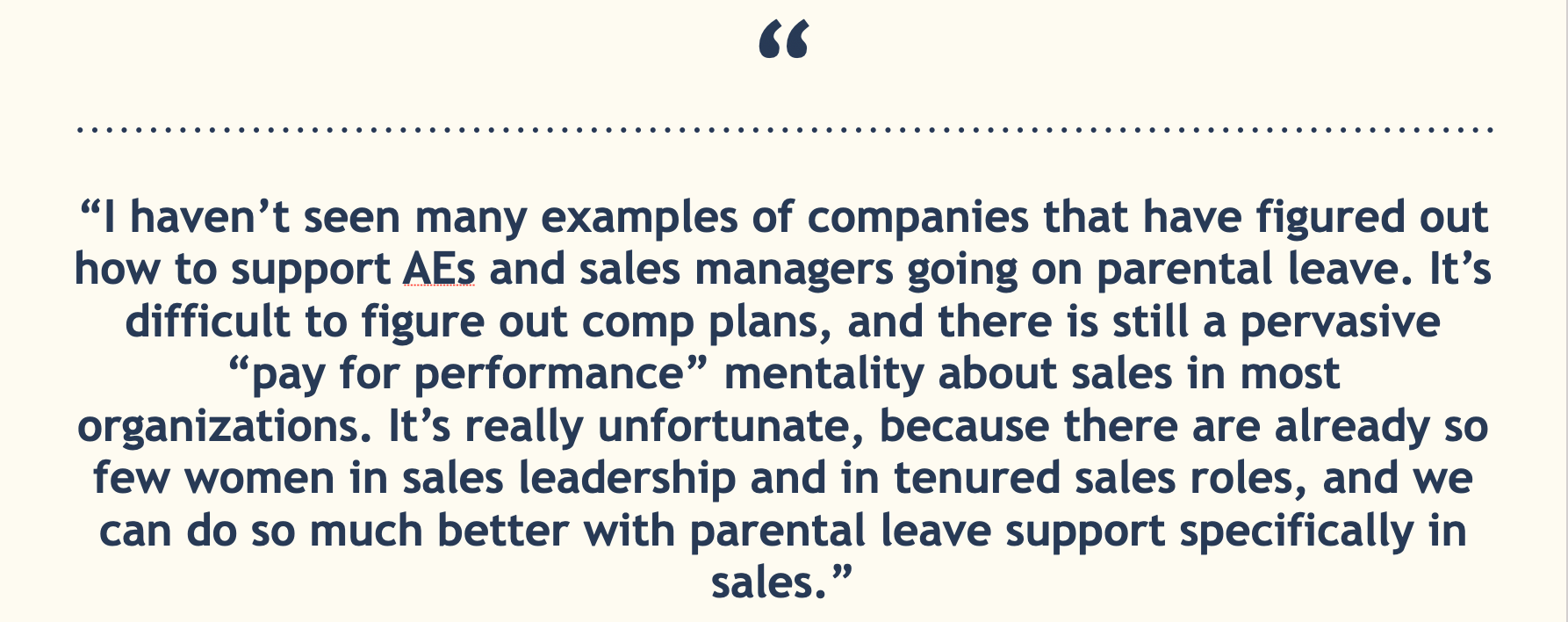
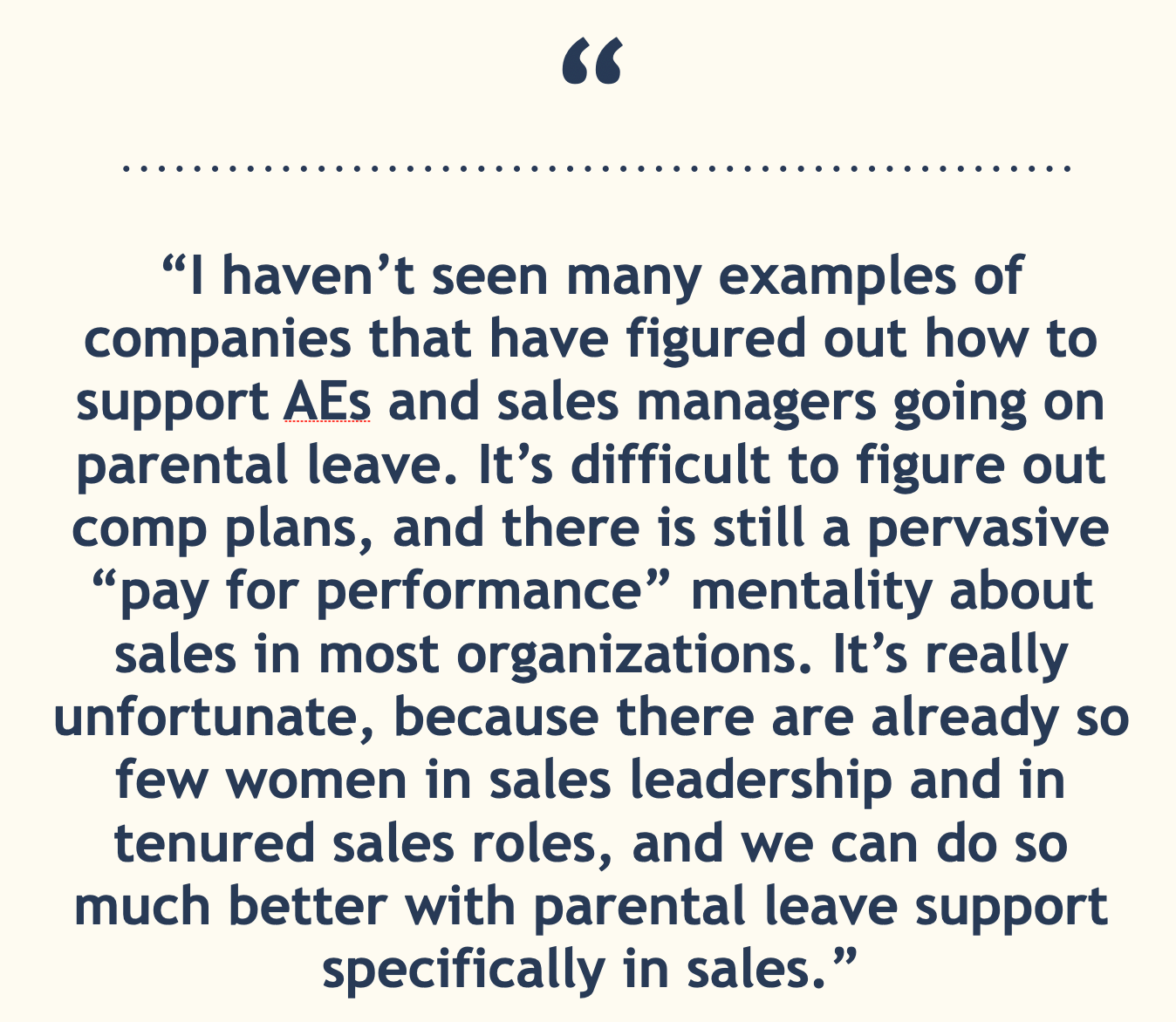
#3 Taking a parental leave as an entrepreneur
Allison had her second child in summer 2020, right in the middle of COVID. Her original coverage plan included hiring a contractor to take over sales for her while she took leave. However, given the environment with COVID, she opted to pause sales and have her co-founder cover only her work streams associated with their existing client base.
Her advice to other entrepreneurs who are taking parental leave:
- Use your pregnancy to your advantage to accelerate key milestones: Allison was able to get “yes or no'' commitments from her entire pipeline of potential clients by using her due date as a deadline. About two months before her due date she went back to every company with an outstanding proposal to say “I’m going to be out on leave starting in August (I’m having a baby!). Would you like to move forward before then, or would it be helpful to introduce you to my co-founder who will cover for me when I am out?” This soft nudge resulted in immediate clarity on which prospects were serious, and which were not — saving months of time, and avoiding wasteful work with prospects who were not going to buy.
- Set up support systems that allow you to work while on leave: For many entrepreneurs, it’s simply not possible to stop all work for an extended period of time. In anticipation of this need to work, Allison relied on her husband and her (retired) parents to provide small windows of childcare at a moment’s notice so that she could handle anything urgent that came up while she was on leave.
- Listen to your body and your intuition with regard to when to do work on leave: Allison took a work call with a client only three weeks postpartum, which she was slightly embarrassed about. “I’m someone who advocates vocally for parents to have more time off to focus on their child, and yet there I was so quickly after childbirth jumping on a client call. But honestly — I felt fantastic. This was my second child so I recovered much faster, my husband was on parental leave with me, and the call lasted only 30 minutes. I could not have done much more work than that, but that call was really important, and I was so excited to participate.”
- Focus on keeping your clients happy, and deprioritize growth: While this can be painful to pause growth activities, Allison found that she didn’t have the bandwidth to do anything growth-related while on leave. Instead, she focused on keeping her existing clients happy, while selecting a few low-touch but high-impact growth activities like speaking on panels once she hit the three month postpartum mark.
- Think about what activities are fun to do while on leave that will also help your business: Allison began to post on LinkedIn much more frequently on leave, which helped with her company’s brand awareness, drove inbounds, and was a low-touch but interesting way to stay engaged.
- Phase back your return: Around three months postpartum, Allison set up recurring childcare blocks (about 20 hours per week) with her parents, which was the first time she did any meaningful proactive work since having her baby.
- Pay attention to what happens to the business when you stop working: It was eye-opening to Allison what happened to her business once she stopped working. Before having her baby she had spent around 70% of her time on sales, and then when she went on leave she put all new sales on pause. But the company kept growing, as referrals, warm introductions and inbounds picked up. When she returned to work she realized she could reallocate that 70% of her time to other activities with higher ROI.
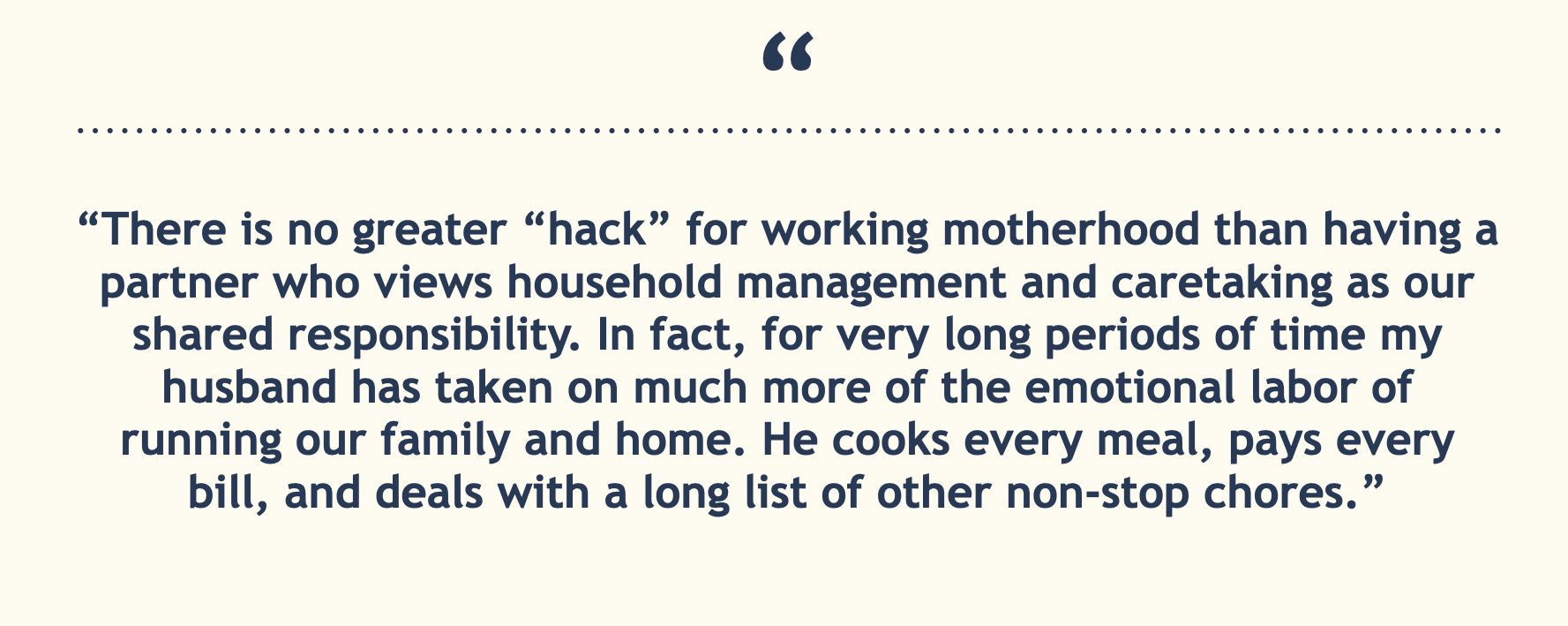
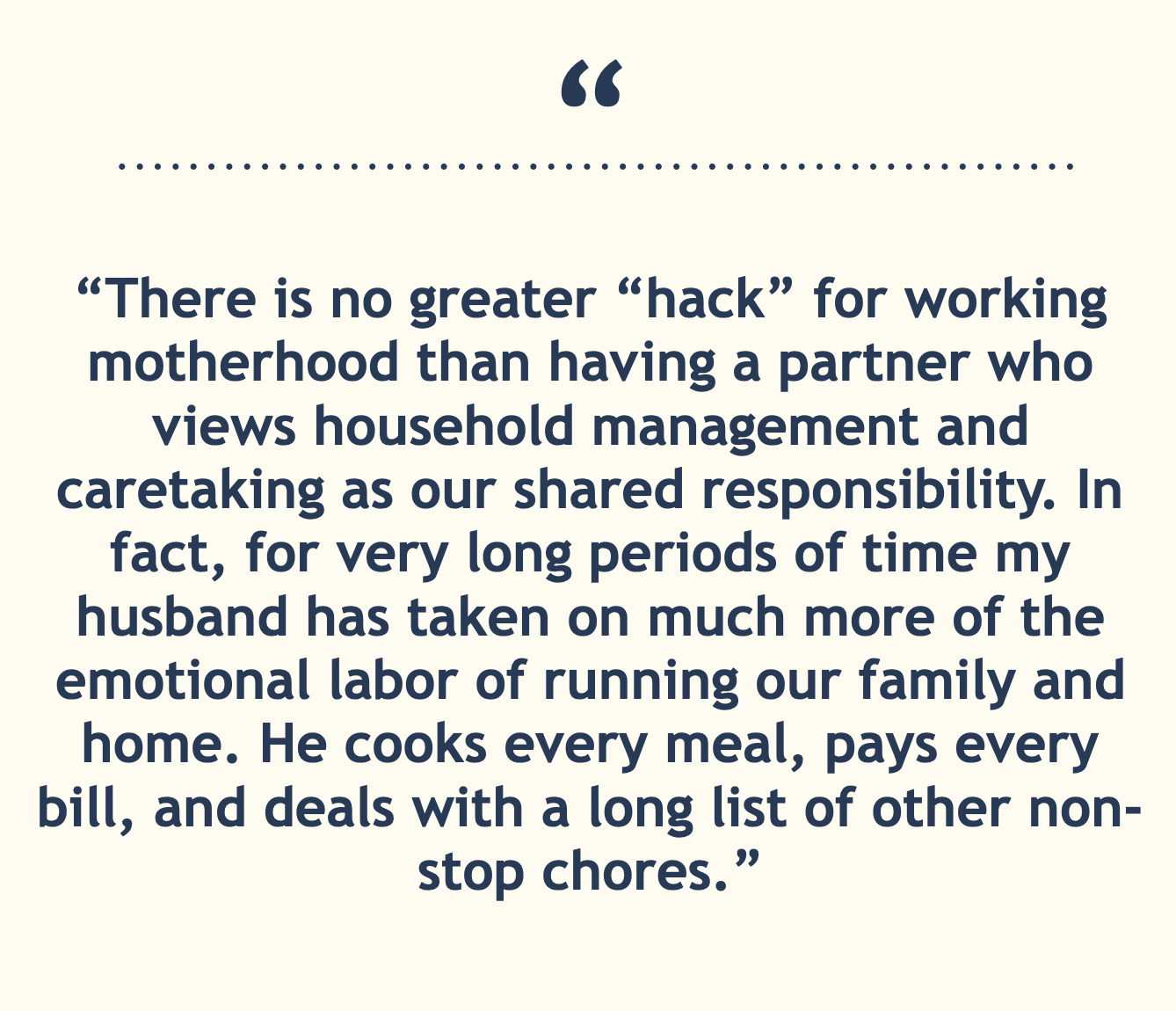



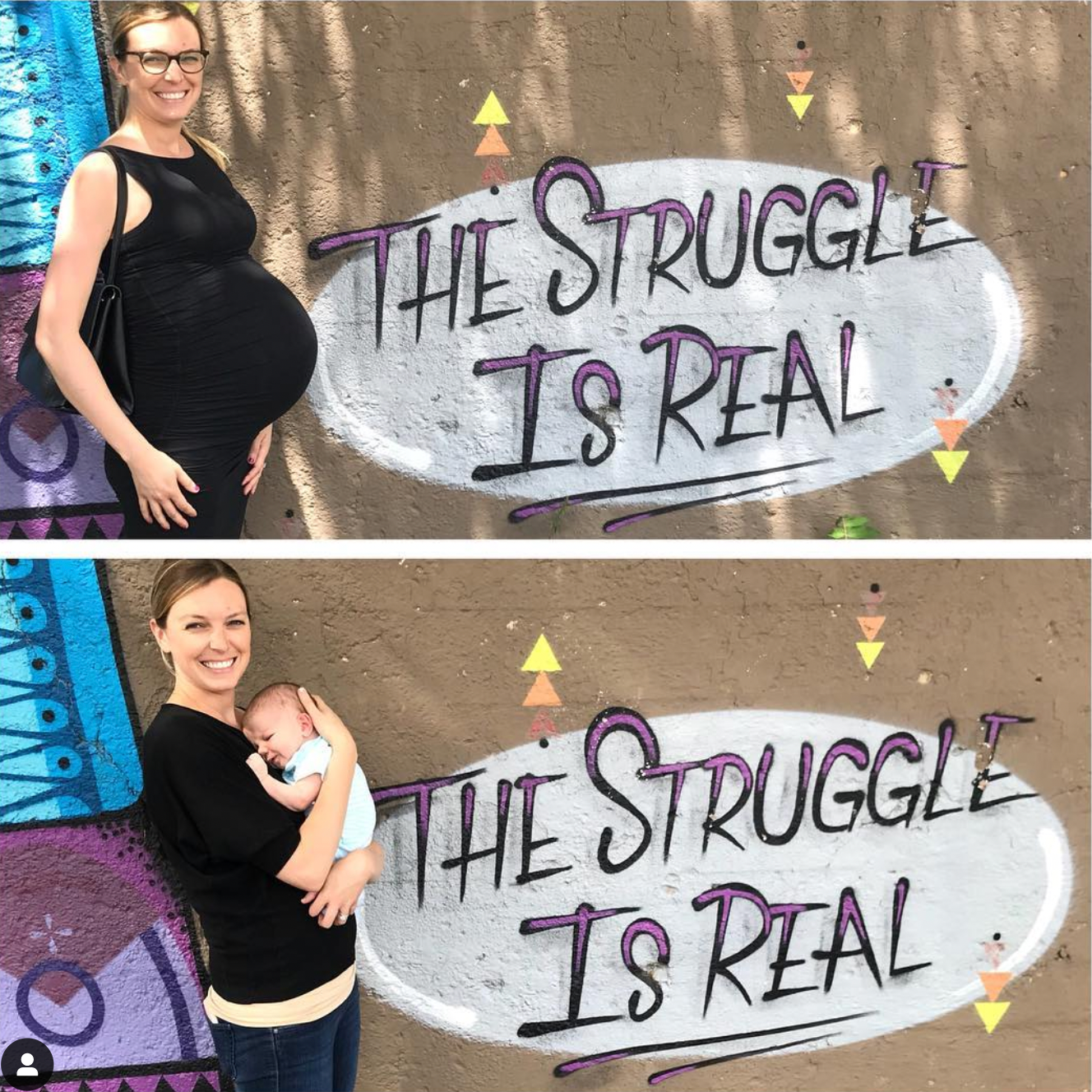

Want to read more of these stories?
We'll send them straight to your inbox every time we publish a new profile (two times per month).
Send them to me!

